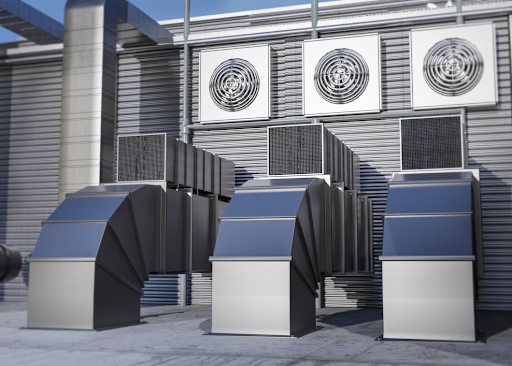As winter approaches, it’s crucial to prepare your tools and equipment for the cold weather, and your air compressor is no exception. Winterizing your air compressor is essential to ensure it operates smoothly and efficiently throughout the winter months.
In this comprehensive guide, we’ll walk you through the steps to winterize your air compressor, protecting your investment and preventing costly damage.
Why Winterizing Your Air Compressor Is Important
Table of Contents
Before we dive into the steps, let’s understand why winterizing your air compressor is crucial. Air compressors are essential tools in various industries, from automotive repair shops to construction sites. They power pneumatic tools, inflate tires, and perform a myriad of tasks. For these, you can consider consulting Control Gear’s Services. Neglecting to winterize your air compressor can lead to several problems:
- Freezing and condensation: Cold temperatures can cause moisture to freeze inside your compressor, leading to blockages, damage to internal components, and reduced efficiency.
- Lubrication issues: Cold weather can cause the oil in your compressor to thicken, reducing its ability to lubricate crucial parts. This can result in increased wear and tear and even permanent damage.
- Decreased performance: When not winterized, your compressor may struggle to start in cold temperatures, leading to longer warm-up times and reduced productivity.
Now that you understand the importance of winterizing your air compressor, let’s move on to the steps you should follow.
Step 1: Locate Your Air Compressor’s Manual
Every air compressor is unique, and the manufacturer’s instructions should be your primary reference. Locate your air compressor’s manual and read the section on winterization. This will provide specific guidelines and recommendations tailored to your equipment.
Step 2: Drain the Air Tank
Before winterizing your air compressor, it’s essential to drain the air tank completely. This will remove any moisture that has accumulated inside. Follow these steps:
- Turn off the compressor and unplug it from the power source.
- Open the drain valve located at the bottom of the air tank. Be prepared for water to flow out, so have a container or bucket ready to collect it.
- Allow the tank to drain fully. You may need to tilt the compressor slightly to ensure all the water is removed.
- Close the drain valve once all the water has been drained.
Step 3: Check and Change the Oil
Proper lubrication is vital for your air compressor’s longevity and performance. Check your compressor’s oil level and condition. If the oil appears dirty or hasn’t been changed in a while, it’s a good idea to replace it. Here’s how:
- Consult your manual to identify the type of oil recommended for your compressor.
- Locate the oil fill cap and remove it.
- Use a funnel to pour the new oil into the compressor. Be sure to use the recommended oil type and fill it to the appropriate level.
- Replace the oil fill cap securely.
Step 4: Inspect and Clean the Air Filter
The air filter prevents dust and debris from entering your compressor’s internals. A dirty or clogged filter can hinder airflow and reduce efficiency. To clean or replace the air filter:
- Locate the air filter housing on your compressor.
- Remove the filter from the housing.
- Inspect the filter for dirt and debris. If it’s clogged, replace it with a new one according to your compressor’s specifications.
- If the filter is reusable, clean it by tapping it gently to dislodge loose particles or wash it with mild detergent and water. Allow it to dry completely before reinstalling it.
Step 5: Protect the Compressor from the Elements
If your air compressor is located outdoors or in an unheated space, it’s essential to protect it from the harsh winter weather. Here are some tips:
- Enclose the compressor: Consider building a simple enclosure or using a weatherproof cover to shield the compressor from snow, rain, and cold winds.
- Insulate the enclosure: If possible, insulate the enclosure to help maintain a more stable temperature inside.
- Provide ventilation: Ensure proper ventilation to prevent overheating. Your compressor needs fresh air for cooling and combustion (if it’s gas-powered).
Step 6: Use an Engine Block Heater (If Applicable)
If your air compressor has a gasoline or diesel engine, it’s susceptible to cold weather-related issues. An engine block heater can help keep the engine warm and ensure it starts reliably. Here’s how to use one:
- Plug the engine block heater into an electrical outlet in advance of cold weather.
- Follow the manufacturer’s instructions for placement and usage of the block heater.
Step 7: Perform Regular Maintenance Checks
Throughout the winter, it’s essential to perform regular maintenance checks on your air compressor. This includes:
- Checking the oil level regularly and topping it up if necessary.
- Inspecting for any signs of leaks, damage, or wear and addressing them promptly.
- Testing the compressor’s performance and monitoring its operation.
Conclusion
Winterizing your air compressor is a vital step in ensuring its longevity, reliability, and efficiency. By following these steps and consulting your compressor’s manual, you can protect your investment and avoid costly repairs. Remember that proper maintenance is the key to a smoothly operating air compressor, even in the coldest of winters. So, take the time to winterize your compressor and enjoy uninterrupted performance throughout the season.







